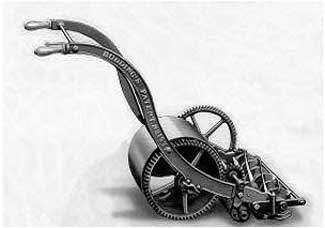Yesterday we discussed the despair that sets in when one quick fix after another fails to improve the performance of the bowling green. Although it sounds boring, common sense greenkeeping is the only answer to this prolonged conundrum.
A major driver of the quick fix quest is the need we have for an industry to supply materials and equipment to facilitate our greenkeeping programs.
Like it or not we are part of a commercial chain that needs constant lubrication in order to keep going. The end result of that process is the pressure put on all of us to try new things, new machines, new fertilisers, new chemicals etc. And of course this isn’t a bad thing in itself, because if it wasn’t for this continual process we wouldn’t have any of the tools we need to continue maintaining our greens. The trouble comes when laymen or greenkeepers lacking confidence in their abilities are constantly bombarded with new “stuff” by “experts”. This leads to “new traditions” which lead to a lack of consistency, which leads to poor results, which leads to desperation for a solution and desperate people are willing to believe anything, so even myths can take on the appearance of common sense greenkeeping.
The somewhat uncomfortable truth is that we as greenkeepers are actually part of the massive worldwide agriculture industry. Very few products or technologies ever see the light of day based purely on the needs of bowling clubs or even the much larger golf segment of the fine turf and sports industry. No, most of the things we use are direct descendants of agricultural or other industrial products or at least are supported by agriculture’s huge global enterprise. Every chemical pesticide we use is a direct copy of a product which has a use in growing crops; every fertiliser product is a result of agricultural research and manufacturing processes; even our mowers are based on a machine originally used for trimming in the massive Victorian carpet and textile industry.
It’s very interesting as part of this discussion to see the current and on-going dilemma that faces farming. The burgeoning world- population means that we have to grow more and more food on fewer and fewer hectares of ground. This ensures that agriculture will continue to be a cutting edge area of scientific research and that as a result we can look forward to continued and constant enticement to try out a multitude of new products and techniques in the future. However, there is one train of thought in agriculture and in life in general that is much closer to the one we need to nurture for the assured excellence of our bowling greens in the future, and that is sustainability.
To accompany this goal of sustainability within agriculture there is a renewed interest in the common sense concept of healthy living soil and that is where we should start on our road to an excellent, high performance bowling green.

